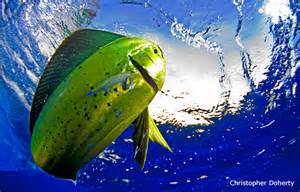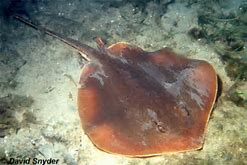If you ask a kid who is standing on the beach looking at the open Gulf of Mexico “what kinds of creatures do you think live out there?” More often than not – they would say “FISH”.
And they would not be wrong.
According the Dr. Dickson Hoese and Dr. Richard Moore, in their book Fishes of the Gulf of Mexico, there are 497 species of fishes in the Gulf. However, they focused their book on the fish of the northwestern Gulf over the continental shelf. So, this would not include many of the tropical species of the coral reef regions to the south and none of the mysterious deep-sea species in the deepest part of the Gulf. Add to this, the book was published in 1977, so there have probably been more species discovered.

Fish are one of the more diverse groups of vertebrates on the planet. They can inhabit freshwater, brackish, and seawater habitats. Because all rivers lead to the sea, and all seas are connected, you would think fish species could travel anywhere around the planet. However, there are physical and biological barriers that isolate groups to certain parts of the ocean. In the Gulf, we have two such groups. The Carolina Group are species found in the northern Gulf and the Atlantic coast of the United States. The Western Atlantic Group are found in the southern Gulf, Caribbean, and south to Brazil. The primary factors dictating the distribution of these fish, and those within the groups, are salinity, temperature, and the bottom type.
Off the Texas coast there is less rain, thus a higher salinity; it has been reported as high 70 parts per thousand (mean seawater is 35 ppt). The shelf off Louisiana is bathed with freshwater from two major rivers and salinities can be as low as 10 ppt. The Florida shelf is more limestone than sand and mud. This, along with warm temperatures, allow corals and sponges to grow and the fish assemblages change accordingly.
Some species of fish are stenohaline – meaning they require a specific salinity for survival, such as seahorses and angelfish. Euryhaline fish are those who have a high tolerance for wide swings in salinity, such as mullet and croaker.

Photo: National Wildlife Federation
Forty-three of the 497 species are cartilaginous fish, lacking true bone. Twenty-five are sharks, the other 18 are rays. Sharks differ from rays in that their gill slits are on the side of their heads and the pectoral fins begins behind these slits. Rays on the other hand have their gill slits on the bottom (ventral) side of their body and the pectoral begins before them. Not all rays have stinging barbs. The skates lack them but do have “thorns” on their backs. The giant manta also lacks barbs.
Sharks are one of the more feared animals on the planet. 13 the 25 species belong to the requiem shark family, which includes bull, tiger, and lemon sharks. There are five types of hammerheads, dogfish, and the largest fish of all… the whale shark; reaching over 40 feet. The most feared of sharks is the great white. Though not believed to be a resident, there are reports of this fish in the Gulf. They tend to stay offshore in the cooler waters, but there are inshore reports.

Photo: Florida Museum of Natural History.
There is great variety in the 472 species of bony fishes found in the Gulf. Sturgeons are one of the more ancient groups. These fish migrate from freshwater, to the Gulf, and back and are endangered species in parts of its range. Gars are a close cousin and another ancient “dinosaur” fish. Eels are found here and resemble snakes. As a matter of fact, some have reported sea snakes in the Gulf only to learn later they caught an eel. Eels differ from snakes in having fins and gills. Herring and sardines are one of the more commercially sought-after fish species. Their bodies are processed to make fish meal, pet food, and used in some cosmetics. There are flying fish in the Gulf, though they do not actually fly… they glide – but can do so for over 100 yards. Grouper are one of the more diverse families in the Gulf and are a popular food fish across the region. There untold numbers of tropical reef fish. Surgeons, triggerfish, angelfish, tangs, and other colorful fish are amazing to see. Stargazers are bottom dwelling fish that can produce a mild electric shock if disturbed. Large billfish, such as marlins and sailfins, are very popular sport fish and common in the Gulf. Puffers are fish that can inflate when threatened and there are several different kinds. And one of the strangest of all are the ocean sunfish – the Mola. Molas are large-disk shaped fish with reduced fins. They are not great swimmers are often seen floating on their sides waiting for potential prey, such as jellyfish.
We could go on and on about the amazing fish of the Gulf. There are many who know them by fishing for them. Others are “fish watchers” exploring the great variety by snorkeling or diving. We encourage to take some time and visit a local aquarium where you can see, and learn more about, the Fish of the Gulf.
 0
0

